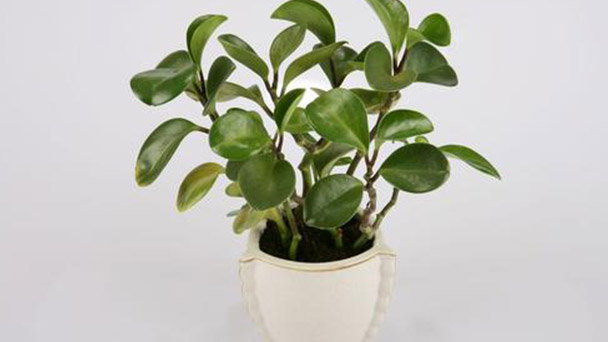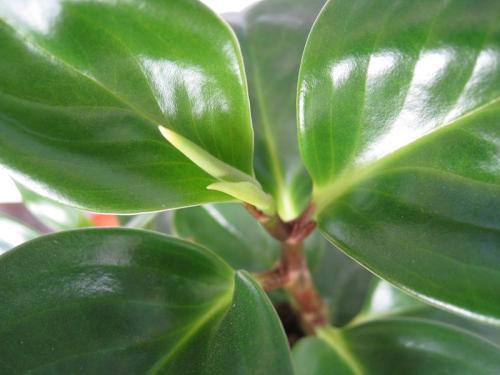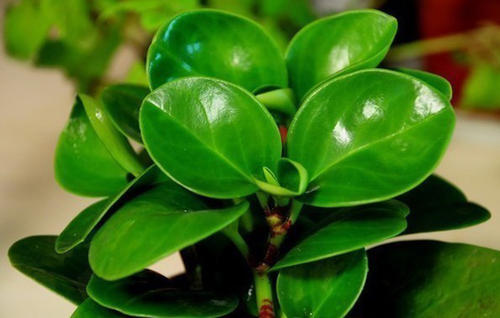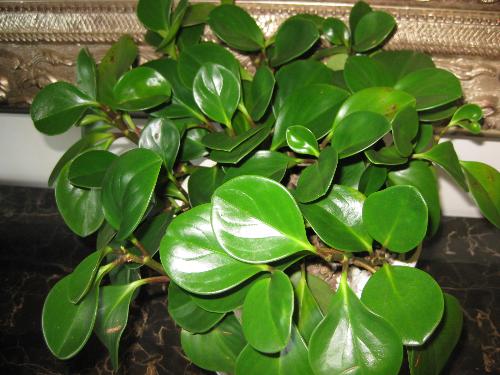Peperomia Tetraphylla Caring Tips
Written by Maggie
Dec 01 2021

Peperomia Tetraphylla, a petite and lovely plant, is one of the most common ornamental plants in the office. Recently, a flower friend found her Peperomia Tetraphylla rotten roots, how to deal with it. Don't get nervous, because even if the roots rot, there's hope for Peperomia Tetraphylla to save them. How does that work? Let's look at some Peperomia Tetraphylla caring tips.

Caring tips for Peperomia Tetraphylla's rotten roots
Peperomia Tetraphylla rotted roots? Don't be afraid, we can take advantage of the peperomia tetraphylla easy cuttage to reproduce!
Let's analyze Peperomia tetraphylla roots rotted reasons, in order to avoid similar mistakes again in the future. Generally, root rot is due to long-term accumulation of water. For example, some flower friends’ Peperomia Tetraphylla is half soil and half water nutrition. Although these ways can be in the short term, in the long term it is not conducive to the growth of Peperomia Tetraphylla. Some flowers use nutrient soil. L long-term high frequency watering leads to stuffy roots and finally rot roots.
First of all, take the Peperomia Tetraphylla out of the pot, rinse it, cut off the rotten parts, let it sit in a cool, ventilated place for an hour until the wound heals, and then insert it into the moist soil (pure sand, perlite, etc.).
Use Peperomia tetraphylla easy cutting principle. There is no way to recover the part that has rotted roots, so re-cutting is the best solution, the basic survival rate is 99%. Of course, there are also some flower friends like water inserted root and then transplanted. This is also possible, as long as flower friends remember that Peperomia Tetraphylla is very easy to reproduce.
Peperomia Tetraphylla is a semi-negative plant, which should be placed in a place with good scattered light at ordinary times, and in winter when the temperature is low, it can be placed in a place with sufficient light. However, if kept in an overshaded environment for a long period of time, Peperomia Tetraphylla is not only prone to the phenomenon of shortening of branches and stems, but also shallow and dull leaf color, which greatly affects the ornamental value.
Peperomia Tetraphylla prefers a warm and humid environment. It grows rapidly in spring and autumn, and slowly or stops growing in summer and winter when it is hot and cold. Peperomia Tetraphylla prefers water and thrives in a humid environment. Therefore, it is necessary to spray water around and on the leaves in the hot and dry summer to maintain high air humidity. In winter, families with central heating supplies should often spray water to the leaves, so as to properly increase the humidity while cleaning the leaves, so that Peperomia Tetraphylla's leaves can be bright green.
Peperomia Tetraphylla prefers water, drought resistance, usually watering to see dry, see wet, basin soil can not be too dry. However, care should be taken to avoid standing water in the pot, as waterlogging can easily lead to root rot and plant disease. It depends on low temperatures in the winter, water less when the temperature is lower, and water more when the sun is shining. In order to avoid water in the basin, planting had better be able to choose the better permeability of the earthen basin or pottery basin.
Peperomia Tetraphylla has not too high requirements for fertilizer, winter and summer two seasons of a small amount of fertilizer, other seasons can use thin fertilizer irrigation, it is best to do "thin fertilizer frequent", avoid thick fertilizer raw fertilizer.
5. Well-maintained Peperomia Tetraphylla has strong branching ability and rapid growth. Usually, it is necessary to pay attention to pruning and cutting the high and dense branches, which can not only improve the airflow between the branches and stems, but also keep the beautiful plant shape. The mature branches can be cut and propagated, and the survival rate of rooting is very high.
Read More:
How to Propagate Peperomia Tetraphylla

Peperomia Tetraphylla - Most Common House Plant
Caring tips for Peperomia Tetraphylla stem and leaf root
High temperature and high humidity in summer, Peperomia Tetraphylla leaves are leathery, able to prevent part of the water transpiration, and does not require high environmental humidity. High temperature and humidity are harmful to their growth. The leaves appear speckled in light plants and turn black and rotten in heavy plants. Therefore, watering would rather be less than more. If there is too much water, it is easy to cause rotten leaves. Also pay attention that often keeps the basin moist soil. Planting should use earthen Devonian, cover plastic basin. Peperomia Tetraphylla is not suitable for large pot cultivation.
Cold water in winter can also cause the stems and leaves to rot. Accordingly, we need to use lukewarm water, too cool tap water should air bask in 1~2 days hind reoccupy.
Peperomia Tetraphylla is not cold resistant, avoid low temperature, the room temperature should not be less than 10℃ over winter, otherwise the leaves will appear pitted, and then decay.

Latest Updated
- Benefits of Bugleweed - 7 Science-backed Health Benefits
- Bugleweed Dangers & Side Effects - Is It Poisonous?
- How to Plant Evergreen Trees - What You Should Know
- When to Plant Evergreens - Grow Guide for Evergreen Trees
- 12 Wonderful Evergreen Shrubs for Your Garden
- 12 Popular Evergreen Plants with Pictures for Beginners
- When And How To Prune A Lilac Bush Like a Pro
- How to Grow & Care for Lilac Vine (Hardenbergia Violacea)
- Japanese Lilac Tree (Syringa Reticulata) Care & Propagation Guide
- Shumard Oak Pros and Cons - What to Know
Popular Articles
- Winter maintenance of Antirrhinum Majus
- How to Grow Terminalia Mantaly Tree
- How to Grow and Care for Crossostephium Chinense
- How to grow Antirrhinum Majus in spring
- Peristeria Elata (Dove Orchid) Profile: Info & Care Guide
- Underwatered Snake Plant (Sansevieria Trifasciata) - Signs And How To Fix
- How to Care for Brazilian Jasmine Plant (Mandevilla Sanderi)
- How to Grow & Care for Graptopetalum Purple Delight in Summer
- Rosa Chinensis (China Rose): Plant Growing & Care Tips
- How to Care for Baby Sun Rose (Aptenia Cordifolia)